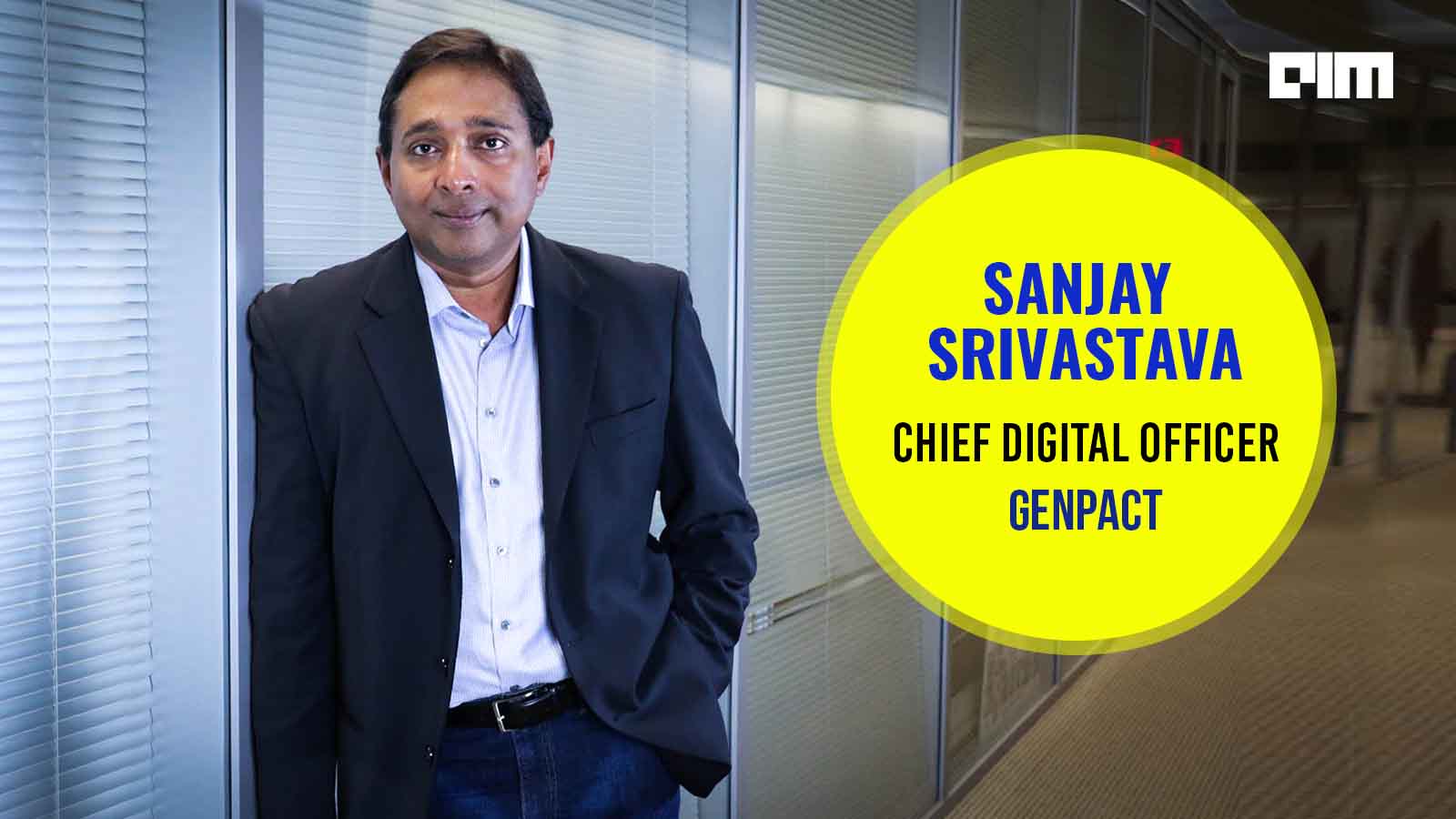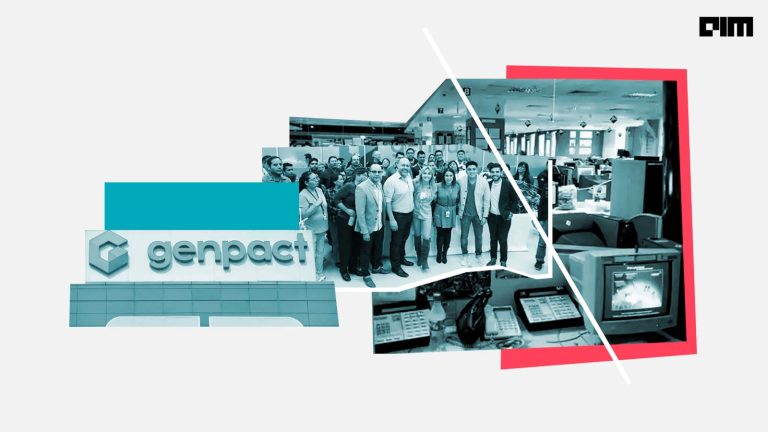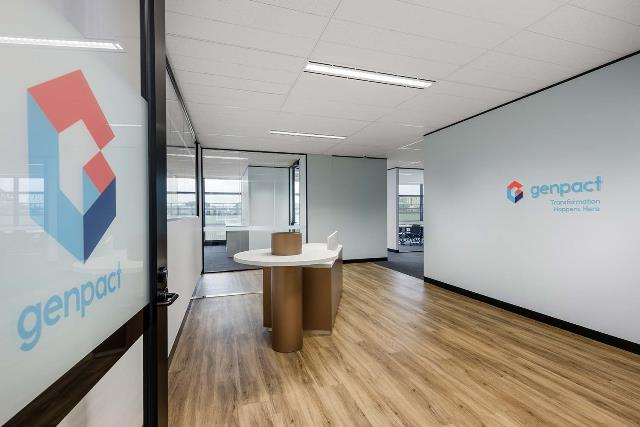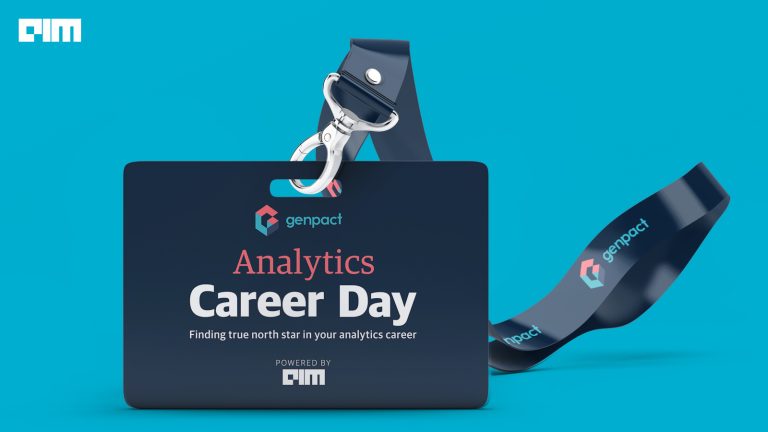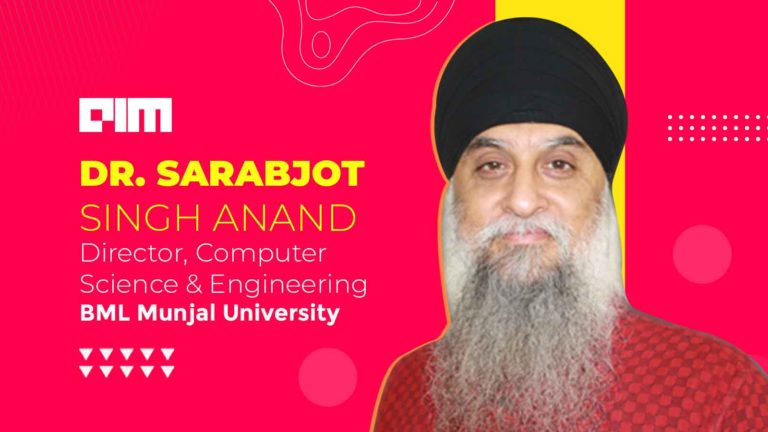The COVID pandemic has brought uncertainty in businesses and enterprises across the globe are facing unexpected challenges. To manage these challenges, protect business continuity and build resilience, governments and businesses must make big decisions — and fast. To ensure this, analytics and data science teams are at the centre of today’s strategic decision-making. AI and tech-enabled initiatives are helping companies overcome the challenges in an efficient manner.
To get an insight into Genpact’s analytics and AI initiatives, we got in touch with Sanjay Srivastava, Chief Digital Officer, Genpact, who spoke in lengths about it. At Genpact, Srivastava runs analytics, AI, digital and technology services businesses. Apart from this, he also serves on the advisory board of a Silicon Valley AI incubator, a digital accelerator, and several tech startups.
Below are the excerpts:
How does Genpact maintain a competitive edge using data analytics?
There are a few key building blocks every company needs to remain competitive with data analytics.
- Building a foundation of data: For large companies, it’s about unlocking the value of the data they already have by lighting it up using AI and ML techniques.
- Leveraging Connected Ecosystems: Enterprises need to leverage not only the data that sits inside the company but also data they can get from their ecosystem of clients, providers, vendors, and partners, allowing them to optimize for the entire ecosystem.
- Understanding the weak links: Now we have compute engines strong enough to uncover the weak links and indicators that would not be obvious to the human workforce. Bringing these weak links to light allows enterprises to optimize or rethink their operations.
Combining the power of data, advanced analytics, machine intelligence, and human judgment – also known as augmented intelligence – empowers the enterprise to make more informed decisions. As companies deal with the pandemic and look to transform themselves, it is critical to redesign and transform their processes. In order to do that, they need the right foundation of data, the capability to drive analytical insights to drive business results and AI and automation to instrument these insights.
Can you also tell us about the work (proprietary algorithms or models) that you leverage/ and or are currently working on in relation to AI/ML?
After deploying hundreds of projects at some of the largest companies in the world, we have learned a few important lessons.
- It’s easy to experiment but it’s hard to scale. Large companies need a new business technology architecture which allows them to leverage previous investments and add new innovation. This new business technology architecture needs to provide integration capabilities, modularity, a governance framework, and be defined by experience as the true north. Genpact Cora is Genpact’s digital business platform that does this. It is designed to incorporate the best capabilities of partners in the ecosystem, but to do so in a manner that is modular, with compostable services that become part of a greater end-to-end transformation.
- AI needs training with the right context and business insights. AI platforms available on the market are like a shell, they just provide the compute engine – but in order for real adoption in the enterprise, AI models need to be pre-trained with the right goal orientation and contextualization. Genpact has rolled out pre-trained AI accelerators that are designed to address the critical barriers to AI adoption in the enterprise. These prebuilt engines combine AI technology, deep data sets, and pretrained, contextually relevant industry domain expertise, drawing on Genpact’s experience running operations for hundreds of large companies across multiple industries.
- Talent is a key to success – talent needs to be bilingual. We believe that success belongs to those who exhibit or learn to hone “bilingual” talent – the combination of domain and digital. An AI application, if properly built, can get us to a reasonable starting point — predictive accuracy of 80% or more. As exceptions are processed the humans, the AI application fine-tunes its underlying algorithms to increase prediction accuracy. Having the right human in the loop with bilingual talent (domain and digital) to train the model is the key to success.
Can you tell us about the technology leadership initiatives that you are driving at Genpact?
We’re seeing disruption create new opportunities for growth, and businesses across the world should look to and plan early for, that growth as we rebound out of this crisis. In this sense, we’re leveraging trends that we’re seeing in the market:
- The move to the cloud: We’re seeing that businesses are accelerating their digital transformation. Prior to COVID-19, many were on a five-year roadmap to digitize their operations. Now, most want to become fully digital within just two years. In fact, there has been an accelerated consumption of cloud-based services and solutions and we are seeing a 10x faster business acceleration to the cloud.
- Data-driven insights: The COVID-19 pandemic is fundamentally changing the way we do business. Predictive analytics will drive an optimized reality. Customers expect the companies they engage with to anticipate their needs and behaviours. This is only possible for utilizing predictive insights and analytics. Predictive insights improve resilience and will transform operations. Using accurate prediction models will allow businesses to shift from a reactionary detect-and-respond paradigm to a proactive foresee-and-prevent model that also enables businesses to react seamlessly to the unpredictable. The ability to predict with precision and at scale will change business models – and, once again, redefine consumer expectations.
- Human-centred design: Businesses need to create employee experiences, rather than just using technology – The best and most updated technology does not necessarily equate to providing the best experience to your workforce. A deliberate and strategic vision aligned with user needs should be the defining factor when harnessing technology. In the new world, digital customer experience will need to reinvent these old ways of engaging with customers and transacting business. And this redesign will require reimagining entire customer journeys, building new digital capability, intelligently automating much of lower value tasks, and improving the customer experience digitally.
What is the day-to-day work of the in house analytics/ML or data science team?
AI is fundamentally focused on these three aspects:
- Build the right pipeline for data: Building the right data foundation drives actions and decisions that can make or break businesses. On top of the data foundation, our digital experts’ layer in business and process knowledge, data science, AI, and machine learning capabilities. Our data scientists have implemented In-Memory Data Architectures to rethink “fit for consumption” data that can support on-demand consumption of data. This includes extract, load and transforms operations along with implementing a data governance strategy. With the exponential increase in the volume of data, both structured and unstructured, data governance has taken the center stage.
- Ask the right questions: Once the data is cleaned and ready to use, the more important step here is to leverage the data to find out what are the right questions to ask for the business. Based on the available data, the ideal modelling techniques are chosen, and the data is then split into two parts for model building — a training data set and a validation data set that is used to test the model performance. When the model performs in accordance with the established business criteria, its impact is captured, and the model is approved for deployment.
- Use the best analytics tools to answer the questions: Our Data scientists engage in projects aimed at converting insights to-real world positive business outcomes by using descriptive or diagnostic or predictive or prescriptive analytical tools such as Next Best Action modelling for offering a seamless customer experience and many other advanced Artificial Intelligence based algorithms. We also focus heavily on the hand holding our clients to ensure that they truly understand the insights generated and thus enable faster adoption rates at scale. With agile as our modus operandi, we continuously evolve our solutions based on frequent feedback from clients and finally deliver ‘human-centric’ augmented intelligence solutions with best-in-class user experience.
What machine learning tools/frameworks/libraries do you use frequently?
- The breadth of technologies: Depending on the specific use case and the technology stack preferred by our clients, our data science teams decide the technologies be used for the projects. Decisions on libraries-of-choice are also determined by the type of data – structured or unstructured and the nature of the data science challenge, that is, whether it is a credit card fraud detection model, or it is an omnichannel chatbot. Also, it is important to realize that the enormous computing power needed to solve such complex real-time business challenges demands virtual machines.
- Cloud-based technologies: We help large organizations through various types of cloud journeys, from migrating legacy systems to cloud platforms, to operationalizing AI models in a cloud environment or managing complex data lakes. In order to enhance our data management, data science and artificial intelligence operationalization capabilities, we have established strategic partnerships with multiple vendors, such as AWS, Azure, Cloudera and others. Since the pandemic, our clients started prioritizing their existing infrastructure to cloud-based platforms. And we enabled the seamless transition to cloud platforms for them.
- Pre-trained Accelerators: One of the biggest challenges enterprises face in adopting AI at scale is the need to train models with real-life data in a specific domain. We have rolled out ‘Pre-trained’ AI and analytics accelerators. They allow us to rapidly and modularly build an enterprise application at scale, without starting from ground zero for every business use case. With such accelerators deployed across all industries, companies can start off their journeys performing at more than 90%+ accuracies from the start.
What are the other main components of the tech stack? (Eg. Cloud, Programming languages, databases, etc.)
- Big Data Management – We use platforms such as MongoDB, PostgreSQL, Redis, Azure Cosmos DB and Hadoop to effectively manage the 4 V’s of data management — Volume, Variety, Velocity, and Veracity. Our data ingestion and data pre-processing capabilities stem from expertise in a plethora of industry-standard big data management platforms.
- Programming Languages: We use programming languages such as Python, R, Julia, SAS, Scala and Java to help ingest, clean, and transform both structured and unstructured data.
- AI/ML Libraries and Solvers: We use libraries and solvers such as Pytorch, Keras, TensorFlow, IBM CPLEX, COIN-OR and GUROBI Optimization, for training models to mimic human behaviour and utilize adequate computing capabilities. Specific libraries are used dependent on the nature of the Data Science challenge.
- Storytelling Tools: We utilize the visualization tools like Power BI, Tableau, Qlik and others to empower business leaders with important data-driven insights. Using these storytelling tools, we also visualize models, its variables, transformations, changes in hyper-parameters during training and outputs. This helps us to debug and fine-tune ML models quickly and deploy with minimal downtime.
- Deployment Platforms: We provide end-to-end solutions ensuring smooth deployment of complex AI/ML models across any production environment. We deploy various techniques to bundle an application together with all relevant libraries, configuration files, dependencies, code and tools to run it anywhere on cloud or on-premise across a variety of computing environments irrespective of operating systems. We enable such seamless operationalization through technologies such as Docker, Kubernetes, Amazon ECS and many others.
Can you tell us about the research projects which Genpact is currently working on?
With our clients’ heightened focus on driving digital transformation, the last several months have demonstrated that our deep domain depth and process expertise, as well as our investments in digital and analytics, give us a competitive advantage. A few examples include:
- Supply chain optimization – as an example, during the pandemic medical product manufacturers have had to deal with significant challenges predicting demand and a safe return to work for their employees. They address these challenges using epidemiological data along with AI/ML tools to predict demand by location to organize and arrange manufacturing capacity, including scheduling workforce return with an eye to keeping employees safe.
- eCommerce: As the world increasingly shifts towards eCommerce, the prevalence of financial crimes and associated risk is increasing. AI/ML capabilities are exceptional at looking through large sets of data to detect anomalies and are very useful in addressing them.
- Remote collaboration: As we increasingly work in remote locations, it becomes very important to make sure that all the core equipment is running – AI/ML gives us the ability to remotely monitor the equipment and predict maintenance requirements such that uptime can remain high.
What are the technical skills (such as programming languages) that you are looking for?
We tend to look for candidates that have the ability to apply advanced algorithms to solve critical business problems that ultimately lead to positive business outcomes. Candidates with both technical skills and domain expertise have a higher likelihood of being able to identify opportunities where AI/ML solutions can be applied to solve real-time business challenges. Additionally, any candidate with previous experience of working in AI projects at scale should be considered as a significant hire.
We believe that a potential data scientist should have a right mix of 8 elements – attitude, analytical mindset and critical thinking, business acumen, proficiency in mathematics and statistics, competency in coding, understanding of data architectures and storytelling and communication skills. Any candidate with the right blend of these 8 elements is a true bilingual. Bilingual talent helps us apply augmented intelligence techniques to truly transform the business decision making cycles, which in turn enables faster adoption of augmented intelligence at scale.
What does the roadmap look like for the company in terms of core digital technologies?
We at Genpact embrace technology at our core. The best results for digital transformation occur when you can bring three different muscles into play:
- Digital capabilities
- Domain knowledge
- Transformation services
But it is important to build IP in digital. We are taking a thoughtful approach to where and how we build IP [and where we don’t]. We have established a framework across services IP [including frameworks, playbooks and POV] and tech IP [reference architectures, domain data models, business rules and data labels]. We are not building IP in areas where we can leverage hyperscalers and tech providers.
Our strategy of honing in on a specific set of chosen industry verticals and service lines, where we have a deep domain and process expertise, coupled with our investments in digital and analytics capabilities, has positioned us very well to be that strategic transformation partner. As the market continues to evolve at speed, clients in every industry are focused on leveraging digital technologies and analytics to gain a competitive advantage. We partner with them to realize sustainable business transformation for them.


